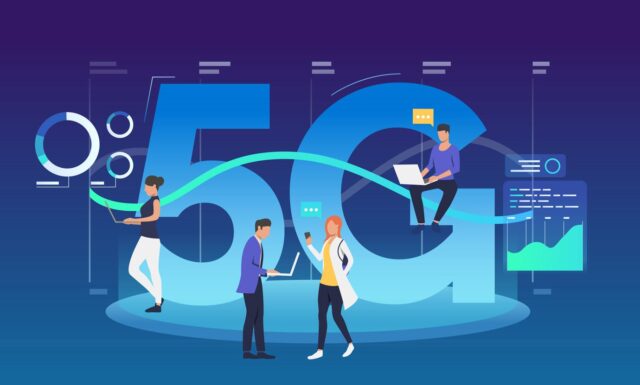The rollout of 5G technology is transforming various aspects of our lives, and its implications for digital marketing are profound. With faster speeds, lower latency, and the ability to connect more devices simultaneously, 5G is set to change how brands engage with consumers. This blog explores the significant impacts of 5G on digital marketing strategies and what businesses need to consider moving forward.

1. Enhanced Mobile Experiences
With 5G’s increased data speeds and improved network reliability, marketers can create richer, more immersive mobile experiences. Consumers can expect seamless access to high-quality videos, augmented reality (AR), and virtual reality (VR) content, all of which can enhance engagement and improve brand perception.
Opportunities:
- Video Marketing: Marketers can leverage 5G to deliver 4K and even 8K video content without buffering, significantly enhancing user experience and engagement.
- AR and VR: Brands can integrate AR and VR experiences into their campaigns, allowing customers to interact with products in innovative ways. For example, furniture retailers can enable customers to visualize how a piece of furniture looks in their home using AR.
2. Real-Time Interactions
5G technology significantly reduces latency, enabling real-time interactions between brands and consumers. This is particularly beneficial for live streaming, gaming, and interactive content, where immediate feedback is crucial.
Opportunities:
- Live Streaming Events: Brands can host live events and webinars that allow instant interaction with audiences, creating a more engaging experience.
- Real-Time Analytics: Marketers can leverage real-time data analytics to monitor campaigns as they unfold, enabling quicker adjustments and more effective targeting.
3. Personalization and Targeting
With 5G, the amount of data available for analysis increases exponentially. Marketers can harness this data to create hyper-personalized marketing campaigns that cater to individual preferences and behaviors.
Opportunities:
- Data-Driven Insights: The enhanced connectivity allows brands to collect and analyze consumer data more efficiently, leading to better insights and targeted marketing strategies.
- Contextual Marketing: Brands can deliver personalized messages based on real-time data, improving relevance and engagement.
4. Increased Internet of Things (IoT) Integration
5G’s capacity to connect numerous devices simultaneously opens new avenues for integrating IoT technology into digital marketing strategies. Brands can interact with consumers through smart devices, wearables, and connected appliances.
Opportunities:
- Smart Advertising: Marketers can use data from IoT devices to create targeted ads that respond to consumer behaviors in real time. For instance, a smart fridge could suggest recipes based on its contents and send promotional offers for relevant ingredients.
- Enhanced Customer Engagement: Brands can engage customers through smart home devices, delivering personalized content and offers directly to their devices.
5. Improved E-commerce Experiences
5G technology will transform e-commerce by streamlining online shopping experiences. Faster loading times, smoother browsing, and enhanced payment processing will encourage consumers to engage more with brands.
Opportunities:
- Augmented Shopping Experiences: Brands can offer virtual try-on experiences for clothing and accessories, allowing consumers to see how products look before purchasing.
- Faster Checkout Processes: With reduced loading times and improved mobile connectivity, consumers can complete transactions more efficiently, reducing cart abandonment rates.
6. New Advertising Formats
The advent of 5G is paving the way for new advertising formats that take advantage of its capabilities. Interactive ads, immersive experiences, and high-definition content will become more prevalent, allowing brands to capture consumer attention in innovative ways.
Opportunities:
- Interactive and Immersive Ads: Brands can create interactive ad experiences that encourage user participation, such as quizzes, games, or 360-degree videos.
- High-Quality Visual Content: The ability to stream high-quality video content means brands can invest in more visually appealing ads that stand out in crowded digital spaces.
7. Competitive Advantage
Early adopters of 5G technology in their marketing strategies can gain a significant competitive edge. Brands that leverage 5G’s capabilities to enhance user experiences, engage consumers, and innovate their marketing tactics will be better positioned to thrive in the digital landscape.
Opportunities:
- Staying Ahead of Trends: Brands that invest in 5G-enabled marketing strategies will be viewed as industry leaders, attracting consumers who seek cutting-edge experiences.
- Attracting Tech-Savvy Audiences: As 5G becomes more prevalent, tech-savvy consumers will gravitate toward brands that utilize this technology effectively.
Conclusion
The impact of 5G on digital marketing is poised to be transformative. From enhanced mobile experiences and real-time interactions to improved personalization and new advertising formats, 5G offers brands unprecedented opportunities to connect with consumers in meaningful ways.


No responses yet